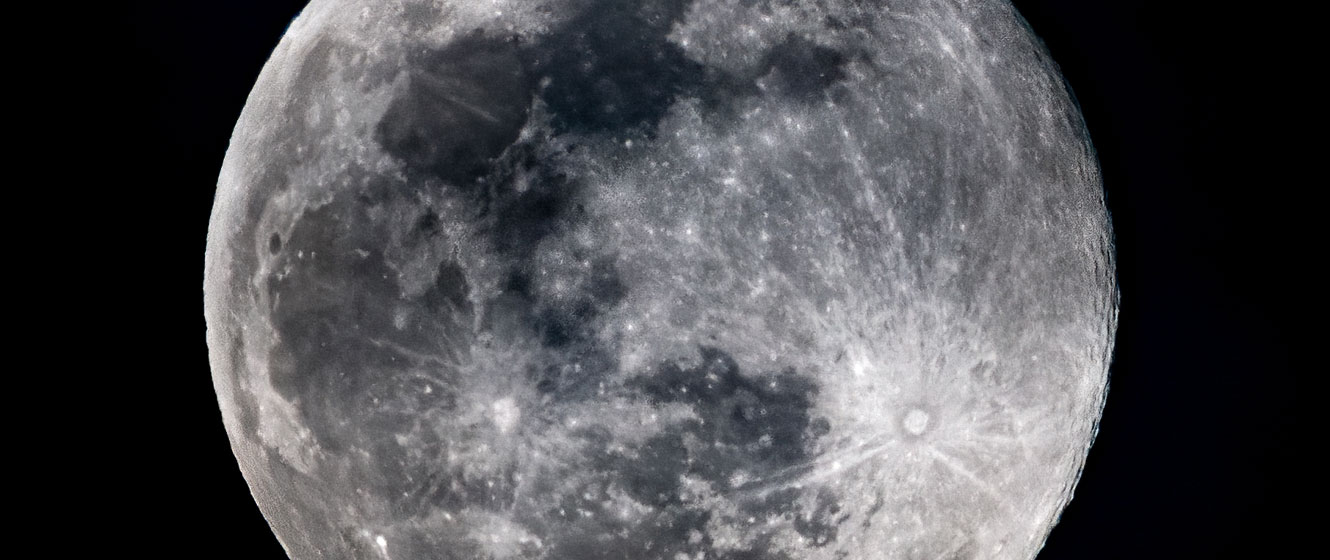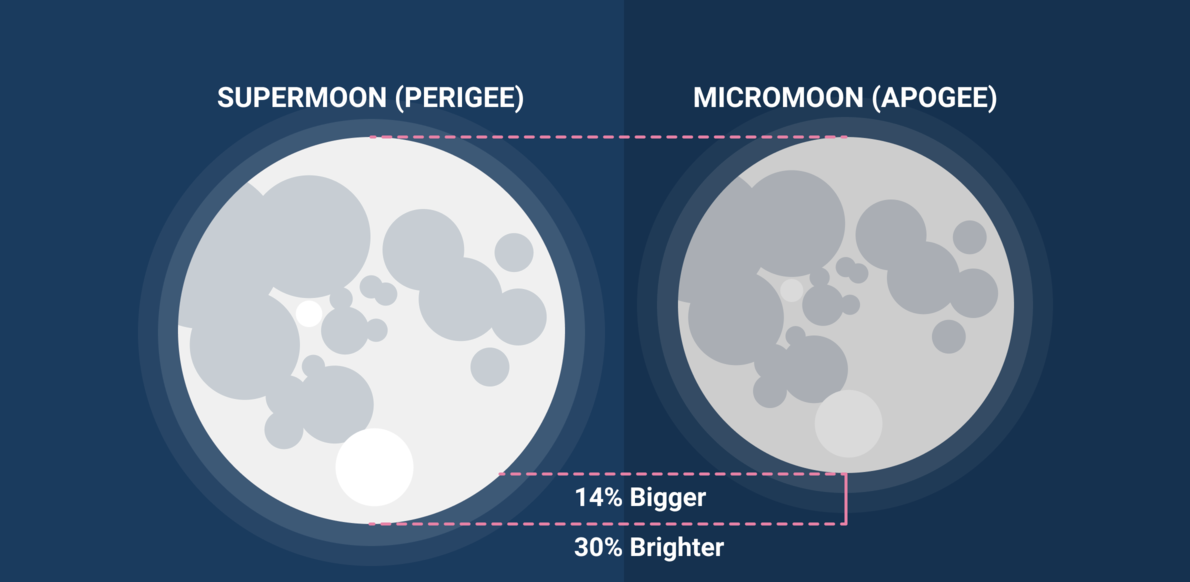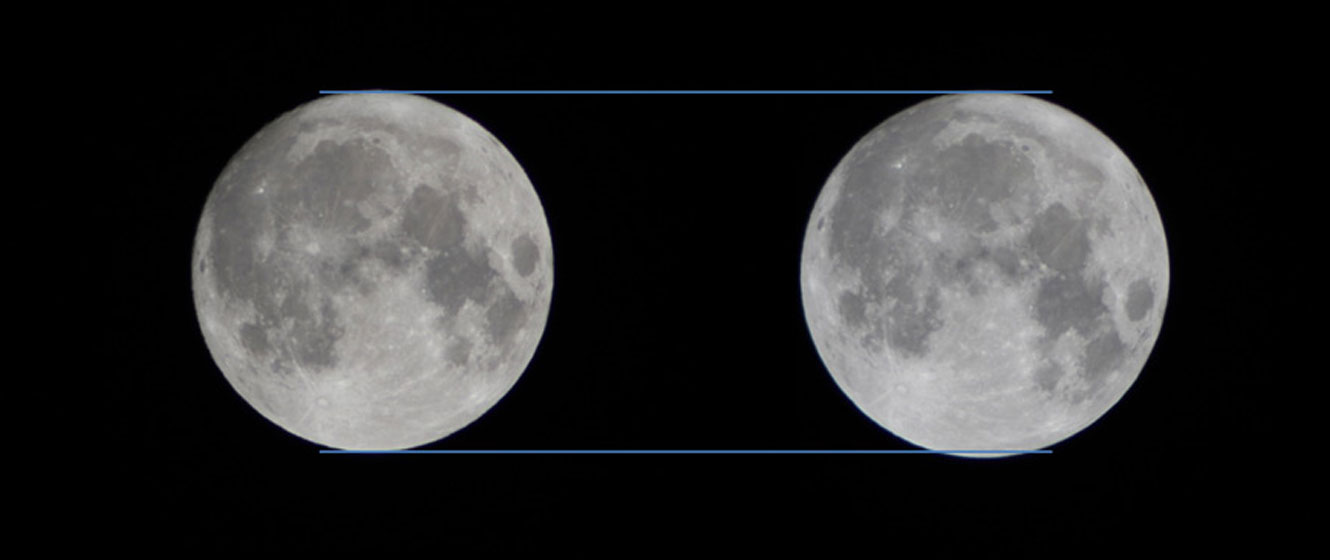
You’ve probably heard this term used a lot over recent years, especially by the media and on various websites online. It seems like there’s a Super Moon every other month, with the term being used to describe almost any full moon that simply appears bigger and brighter than usual. So what makes a moon super? And can you really tell the difference?
What is a Super Moon?
Although the timing of a “Super Moon” is determined by astronomical data, the term itself has its origins in astrology. It dates back to 1979 when an American astrologer named Richard Nolle created it to describe when a full moon occurs within 10% of perigee.
In plain English, an object is at perigee when it’s closest to the Earth. As the Moon’s orbit is elliptical, it doesn’t maintain the same distance throughout its orbit. Therefore, at one point it will be farthest from the Earth (apogee) and at the opposite point, it will be closest to the Earth (perigee).

Image Credit: Timeanddate.com
(The Moon takes just under a month to complete a full cycle of lunar phases, so there are typically 12 full moons every year. Every two or three years there are 13 full moons, with two full moons - a “Blue Moon” - occurring in one month.)
On average, the Moon is 225,803 miles (363,396 kilometers) when at its closest to the Earth, but the Sun’s gravity exerts its influence, causing this distance to vary a little. At a minimum, its closest is 221,429 miles (356,355 kilometers), while at maximum, its closest is 230,155 miles (370,399 kilometers).
In other words, some Super Moons can be more super than others!
How is a Super Moon Different From a Regular Full Moon?
According to Richard Nolle, the astrologer who invented the term, the proximity of a Super Moon can induce natural disasters, such as earthquakes and volcanic eruptions. Fortunately, there’s no evidence to support this!
However, a Super Moon can appear larger and brighter than usual. On average, the full moon covers 31.5 arc minutes, or a little more than half a degree, of the sky. When at apogee, its furthest point from the Earth, the Moon appears 29.5 arc minutes across, while at perigee, its closest point, it appears 33.5 arc minutes across.
To put this into perspective, this means a Super Moon appears nearly 14% larger and 25% brighter than a full moon that occurs when the Moon is farthest from the Earth.
However, a Super Moon is only 6% larger than the average full moon and about 16% brighter. Can you notice the difference? More than likely not, and here’s why:
- Firstly, there’s nothing to compare it to. Specifically, there isn’t another full moon visible in the sky to represent the average or furthest full moon. You’re therefore comparing the brightness of the Moon with memories of previous full moons. Leaving aside the fact that memory is a fickle thing, not all the full moons you’ve seen were the same size or brightness. And the chances are you’ve previously seen a Super Moon and not even realized it.
- Even if a second full moon was visible, with a Super Moon being just 6% larger and 16% brighter than average, your eye might not even notice the difference.
- The Moon always looks bigger when it’s close to the horizon. Caused by your brain misinterpreting size and distance, if you’re observing a Super Moon at moonrise or moonset, you might think you see a larger Moon, when in fact you do not!
There’s no denying that a Super Moon can get everyone looking up, even those who normally wouldn’t. There’s also no denying that some have found a love for the stars because of a Super Moon, but that’s about the extent of its influence over events on Earth. The media might love a Super Moon, but for many, it’s simply a regular, run-of-the-mill full moon!

Image Credit: NASA

Learn More
Interested in learning more about the Moon? Not sure where to begin? Check out our Astronomy Hub!
This Article was Last Updated on 07/18/2023











